

The Simple Comfort of Ochazuke
|
The combination of rice with tea is simple yet comforting. It is a well-loved combination, as evident from its presence in different cultures. There are numerous types of tea flavoured with rice such as Japanese brown rice tea (genmaicha), Thai rice tea (cha hom khao mai), and Korean scorched rice tea (sungnyung). Singaporeans may also be familiar with Hakka thunder tea (lei cha) rice, which can be considered an acquired taste. Moreover, you may have heard of ochazuke.
As you can tell from the name ochazuke, which literally means “tea soaked”, green tea is poured over a bowl of rice. Before ochazuke, there are mentions of yuzuke and suihan in literature works from the Heian period such as The Tale of Genji by Murasaki Shikibu and The Pillow Book by Sei Shonagon. The former is soaking rice in hot water, while the latter is soaking rice in cold water during the hot summer. In the past when there was no rice cooker, leftover rice would eventually harden and become dry. Due to this, people started to pour water over rice in order to make the rice warm and moist again. This allowed yuzuke to become a convenient and portable meal on the go. It is even said that the Sengoku period feudal lord Oda Nobunaga would eat yuzuke on the eve of an important battle. Only in the Edo period, did people begin the custom of pouring tea over rice, usually with bancha or sencha. Ochazuke was a popular dish among the common people, as it was easy and quick to prepare. They also started to eat it with different toppings including umeboshi (dried plum), seaweed and salmon. It was also during this period, when chazukeya popped up. These stores that sold ochazuke were an equivalent to olden day fast food restaurants, and can even be found inside the illustrated guide Edo Meisho Zue (Guide to famous Edo sites). Later on, the first instant ochazuke came out in 1952, allowing people to easily make their own ochazuke with a bowl of rice. Nowadays, it is a common menu item at izakaya. It is also served at restaurants at the end of a course meal, because it acts as an ideal palate cleanser. Nowadays, people may enjoy it with dashi broth or even cold barley tea. You can even choose to eat it with brown rice or multigrain rice. There are many variations when it comes to the toppings. Other than salmon, sea bream is also a popular topping choice. Besides sea bream being an auspicious symbol of good luck, the fish is also less fatty and meatier than salmon in comparison. Hence, it is usually marinated for extra flavour. The toppings can also vary based on the region in Japan. For example, unagi (grilled eel) is a favourite ingredient in Nagoya, a region that is also famous for its hitsumabushi. The Kyoto variation, which is known as bubuzuke, usually features various pickled vegetables. The wonderful thing about ochazuke is how customisable it is, and how you can easily prepare it according to personal preference in the comfort of your home. If you crave for a light meal that is quick and easy to prepare, you can certainly consider ochazuke as an option! |
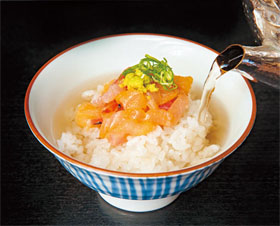 © Osaka Satoshi / PIXTA 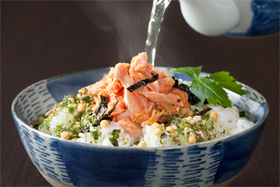 © Web Japan 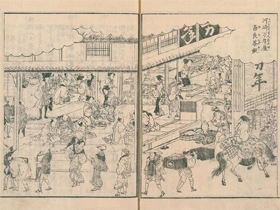 Nara-chameshi (tea rice) at Man'nen-ya, Kawasaki (© Hasegawa Settan, Public domain, via Wikimedia Commons) 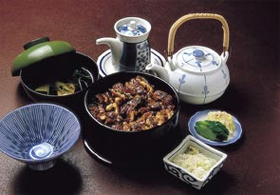 Hitsumabushi © Sugawara Chiyoshi and Kono Toshihiko 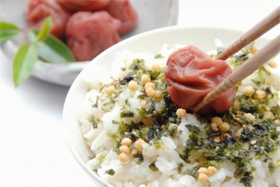 © photoAC |
Resources
|
Kishida, Moe. 2021. “A Comforting Japanese Dish with Tea: Ochazuke”. Yunomi.life. https://yunomi.life/blogs/ocha/the-most-comforting-japanese-dish-ochazuke. Harris, Thalia. 2022. “Chazuke Is an Underrated Japanese Dish”. Sakuraco. https://sakura.co/blog/chazuke-is-an-underrated-japanese-dish/. “Ochazuke: Tea and Rice”. 2022. Gochiso History. Accessed 16 September. https://gochisohistory.com/ochazuke/. |
|
Japan Creative Centre 4 Nassim Road, Singapore 258372 +65 6737 0434 / jcc@sn.mofa.go.jp https://www.sg.emb-japan.go.jp/JCC/ Nearest parking at Orchard Hotel & Delphi Orchard |
 |